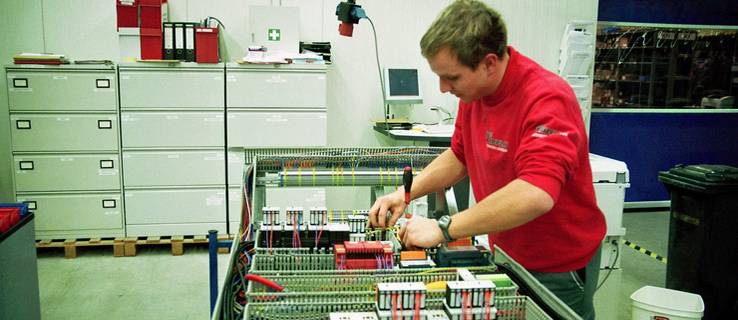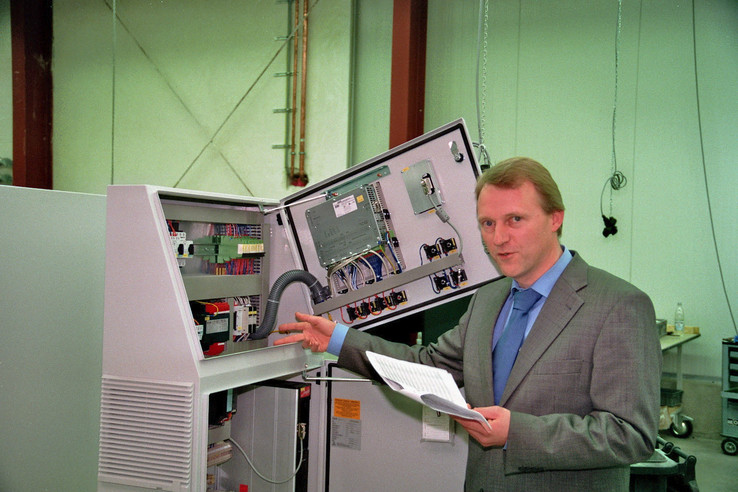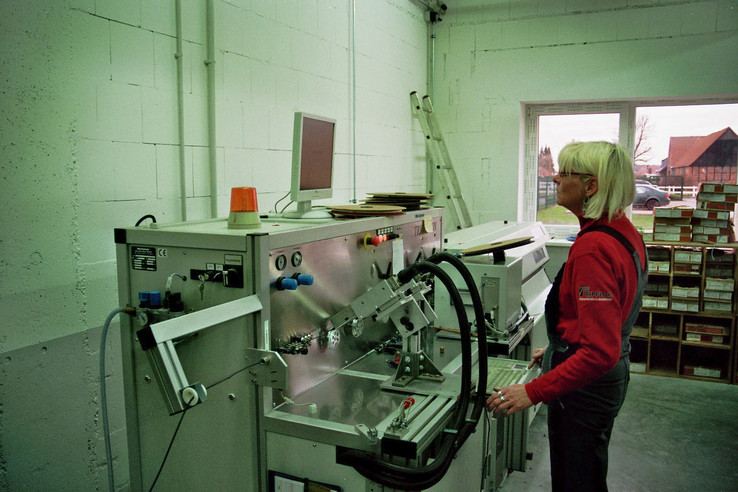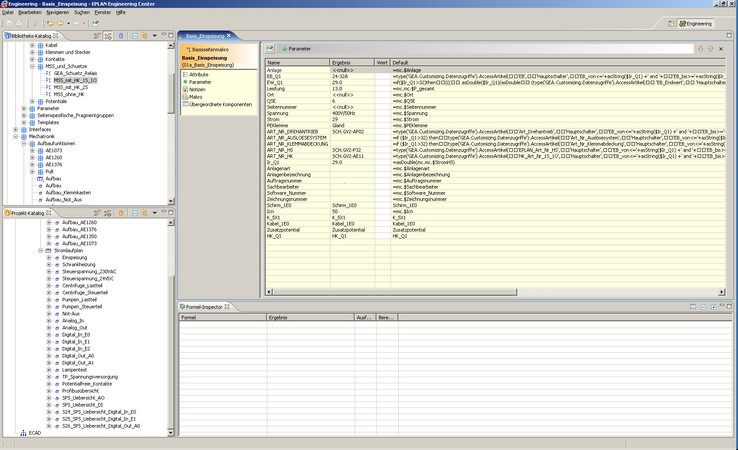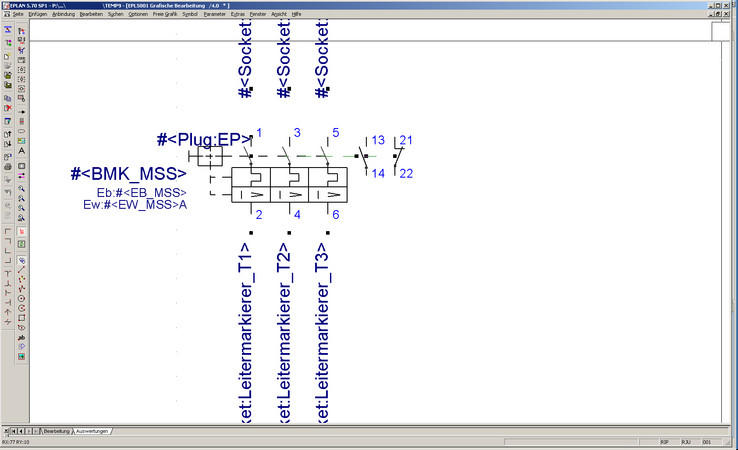EPLAN Engineering Center in operation
Ripploh Elektrotechnik GmbH has automated the design and production of enclosures consistently
Ripploh Elektrotechnik GmbH has automated the design and production of enclosures consistently. Whereby they used a virtual component modular system that is stored in the EPLAN Engineering Center (EEC) as the backbone. The result: The processing times were reduced markedly while increasing the quality. "The consistent solution": This is the title of the company brochure with which Ripploh Elektrotechnik GmbH in Ostbevern presents itself. Consistency is a hallmark of the company that designs switch- and controlgear systems for indus-trial purposes. Andreas Ripploh, a graduate engineer and since 1995 managing partner in the company, has consistently focused on automation and initially con-centrated on production.
First step: Automating enclosure production
This stood to reason since the Westphalian company was originally purely an "extended workbench" for enclosure production – and increasingly has to compete against Eastern European companies. Andreas Ripploh: "We develop automation systems, but do not ourselves use the advantages offered by automation." There-fore the company invested in a CNC unit that machines the housing of the enclo-sure. Which even continues working after work in a "workerless shift" – not only saving time and manpower, but also ensures uniform appearance of the enclo-sures. After the experience made with CNC machining, the company took the next step: An automated cable preparation first determines the exact cable length from the wire parts list of the routing program that is integrated in the ECAD system. The system then cuts the cables directly to length and also places the connection elements. At the same time the cables are labeled in accordance with the drawing. The individual conductor labeling simplifies wiring notably, since the production workers save a lot of time, as they do not have too look at the diagram. And should an item still be missing, it can be installed subsequently without any prob-lems: The cables quasi assign the slot to it. These steps have made the work much more structured. Andreas Ripploh: "We now work much faster and, as far as the costs go, we can hold out against our competitors from Poland and the Czech Republic, for example, and play out our advantages of flexibility, customer proximity and speed."
The next step: Automation in engineering
In parallel Ripploh is extending the engineering – and is also focusing on automation here. Andreas Ripploh: "The enclosure production customers are plac-ing increasingly higher requirements on flexibility and speed. In part we are work-ing with processing times of ten days. This means: We cannot afford to make mis-takes, have to work very structured and certainly do not have any time to reinvent the wheel." It was therefore a logical step for the CAE user to structure the electrical engi-neering design more systematically using the Engineering Center (EEC). The EEC allows the configuration and parameterization of machines or plants on a functional module level. This applies not only for electrical engineering design, but can also be extended to other disciplines such as EI&C technology or the PLC programming. Once these functional blocks have been defined, the designer can call them up simply by pressing a key and assign the desired parameters, such as the performance data. Thus the Ripploh engineers can, for example, access func-tion modules such as the frequency converter interface or the direct drive. From these blocks, in return, customer-specific projects can be generated automatically.
Faster development processes, higher quality
The advantages offered by this procedure are obvious. Andreas Ripploh: "We are working markedly faster and more structured. The development quality has also improved, because we are now using standard modules. This is by far less prone to faults and errors than when one uses existing projects as the basis and modifies them." Standardization is also having a positive effect on the production process: "Previously minor details were often missing in the diagrams and sche-matics, since the designer thought: 'The workshop can handle the details'. Now the production team don't have to handle such details any longer. The work con-sistently through the bill of materials, thus speeding up the workflow. This applies not only to the wiring, but also to mechanical components such as the screwed connections."
Flexibility – also in case of unplanned changes
For these reasons acceptance was not an issue when the EEC was introduced: The advantage is obvious for the designers, in particular since their work has be-come more demanding as the system relieves them of extensive repetitive work (that is prone to mistakes). This applies not only to the day-to-day engineering process, but also to subsequent modifications. Thus, for example, the electrical engineering developers recently had to change all the addresses at a large enclo-sure project with about 2,000 I/O addresses, because the customer required a last-minute correction. No problem with the EPLAN Engineering Center: At the click of a button, so to speak, 3,000 pages of documentation were simply changed automatically.
Connection to the ERP system
Ripploh took the decision in favor of EEC while the engineers were still using EPLAN 5.70. And since the Engineering Center offered such decisive advantages, the company waited with the migration process to the new EPLAN Electric P8 until a corresponding interface to EEC was also available. However, the EEC is not only connected to the E-CAD system. Rather, Ripploh utilizes a consistent data infrastructure that also encompasses the ERP system ABAS. Andreas Rip-ploh: "In so doing we also improved the workflow in the ordering and logistics – all the important functions utilize a uniform data basis." In view of these advan-tages it is not surprising that the EPLAN Engineering Center is being extended further: Establishing a software modular system in EEC is planned as the next step.


